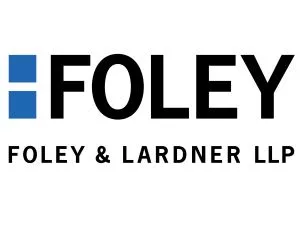- within Food, Drugs, Healthcare and Life Sciences topic(s)
- with Senior Company Executives, HR and Finance and Tax Executives
- with readers working within the Business & Consumer Services, Consumer Industries and Healthcare industries
On October 8, 2025, Governor Gavin Newson signed into law Assembly Bill 1264, the Real Food, Healthy Kids Act, as an attempt to phase out the most "concerning" ultra-processed foods from school meals in California. The bill, among other things, will require the Office of Environmental Health Hazard Assessment in conjunction with the Department of Public Health to adopt regulations by June 1, 2028 and prohibit a vendor from offering "ultraprocessed foods of concern and restricted school foods to a school" beginning July 1, 2032.
Of particular significance is the bill's codification of the first legal definition for ultra-processed foods ("UPFs") in the United States. The definition is functional, focusing on the types of substances present in the product and the roles they play in production, rather than enumerating a static list of banned additives. This marks a departure from existing state efforts to define UPFs and could have notable impacts on how the term is argued in false advertising and consumer protection litigation.
California's Definition of Ultra-Processed Food
Now codified as Section 104661 of the California Health & Safety Code, the statute defines UPF as any food or beverage that contains:
- Surface-active agents; stabilizers and thickeners; propellants, aerating agents, and gases; colors and coloring adjuncts; emulsifiers and emulsifier salts; flavoring agents and adjuvants; or flavor enhancers, excluding spices and other natural seasonings and flavorings; and either:
- High amounts of saturated fat, sodium, or added sugar, or a nonnutritive sweetener or other substance.
Prior to AB 1264, the term UPF had no legal definition in any U.S. jurisdiction. The term appeared in nutrition research and advocacy campaigns, such as via the NOVA classification system proposed by researchers in Brazil, but remained scientifically and contextually fluid. This lack of definitional uniformity has resulted in legal uncertainty in cases alleging harms caused by UPFs, as courts had no statutory touchstone for the term.
Martinez v. Kraft Heinz Co., No. 25-377 (E.D. Pa., Aug. 25, 2025) is illustrative. In Martinez, the plaintiff attempted to bring a nationwide class action against multiple major food companies, alleging they marketed and sold "addictive" and harmful ultra-processed foods to children, resulting in serious health conditions. The plaintiff claimed his development of type 2 diabetes and non-alcoholic fatty liver disease was a direct result of consuming these products. The complaint leaned heavily on public-health research linking UPFs to chronic disease, and invoked the "Big Tobacco" analogy to argue that defendant had engaged in predatory marketing.
Judge Mia Perez dismissed the complaint, calling the plaintiff's factual allegations "woefully deficient." Beyond failing to identify which products he consumed out of the more than 100 brands sold by defendants or when or how often he ate them, the plaintiff failed to establish that consumption of UPFs produced by the named manufacturer led to his diagnosis. Moreover, the lack of a formal definition of UPFs contributed to the vagueness of the plaintiff's claims.
The National Patchwork
Aside from California, other states have passed or considered bills aimed at removing certain processed ingredients from school food, but none have adopted a broad, functional definition of UPFs. Most rely on lists of specific prohibited additives.
- Arizona (HB 2164) – Effective 2026-2027, prohibits schools from distributing, selling or otherwise offering UPFs, defined as a food or beverage that contains one or more of the "standard 11" additives: Potassium Bromate, Propylpareben, Titanium Dioxide, Brominated Vegetable Oil (BVO), Yellow Dye 5, Yellow Dye 6, Blue Dye 1, Blue Dye 2, Green Dye 3, Red Dye 3, and Red Dye 40.
- Alabama (HB 580), Florida (SB 1826), Kentucky (HB 439), Missouri (SB 802), New Jersey (S 4560), North Carolina (HB 874), and South Carolina (HB 4339 and SB 589) all introduced nearly identical additive-list bills modeled on Arizona's language.
- Texas (SB 25) – Expands the Arizona additive list to include any additive that is substantially similar to the "standard 11."
- Louisiana (SB 14) – Defines "prohibited ingredient" as any food or beverage that contains Blue dye 1, Blue dye 2, Green dye 3, Red dye 3, Red dye 40, Yellow dye 5, Yellow dye 6, azodicarbonamide, Butylated hydroxyanisole (BHA), Butylated hydroxytoluene (BHT), Potassium bromate, propylparaben, and titanium dioxide.
Due to the varying definitions of UPFs in state legislation, federal agencies are now seeking to establish a uniform definition of UPFs. Recently, the U.S. Food and Drug Administration and the U.S. Department of Agriculture issued a Request for Information to formally define UPFs. The time period for submitting comments was extended until October 23, 2025.
That said, the broader regulatory picture remains cloudy. The FDA's decades-long refusal to adopt a formal definition of "natural", for example, despite persistent public pressure suggests it is unlikely we will see a uniform federal definition of UPFs in the near term. Further, if history tells us anything, even California's definition will be subject to interpretation and will no doubt lead to litigation and further refinement over time.
Key Takeaway
The defining feature of AB 1264 is not just its impact on California's school lunchrooms, but its legal definition of UPFs. For now, its reach is narrow. Moreover, the bill does not take effect until June 1, 2028, when regulations must be adopted. How or whether California's definition will reverberate in other jurisdictions remains unclear. Manufacturers are best served by staying informed, watching for signs of wider adoption or divergence, and positioning themselves to adapt quickly to whatever standard ultimately takes hold.
The content of this article is intended to provide a general guide to the subject matter. Specialist advice should be sought about your specific circumstances.




